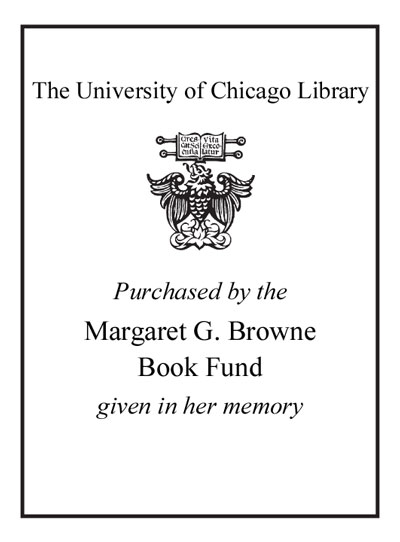|
|
|
|
| LEADER |
00000pam a2200000 i 4500 |
| 001 |
11040501 |
| 003 |
ICU |
| 005 |
20170519162431.3 |
| 008 |
160728s2017 nyu b 001 0 eng |
| 010 |
|
|
|a 2016034957
|
| 040 |
|
|
|a DLC
|b eng
|e rda
|c DLC
|d YDXCP
|d OCLCF
|d OCLCQ
|d HUC
|d OCLCQ
|d NhCcYBP
|
| 019 |
|
|
|a 949911764
|
| 020 |
|
|
|a 9780190255022
|q hardcover
|
| 020 |
|
|
|a 0190255021
|q hardcover
|
| 035 |
|
|
|a (OCoLC)954720014
|z (OCoLC)949911764
|
| 042 |
|
|
|a pcc
|
| 050 |
0 |
0 |
|a BL475
|b .N68 2017
|
| 082 |
0 |
0 |
|a 296.3/36
|2 23
|
| 100 |
1 |
|
|a Novenson, Matthew V.,
|e author.
|0 http://id.loc.gov/authorities/names/n2011063336
|1 http://viaf.org/viaf/187042515
|
| 245 |
1 |
4 |
|a The grammar of messianism :
|b an ancient Jewish political idiom and its users /
|c Matthew V. Novenson.
|
| 264 |
|
1 |
|a New York, NY :
|b Oxford University Press,
|c [2017]
|
| 300 |
|
|
|a xvi, 361 pages ;
|c 25 cm
|
| 336 |
|
|
|a text
|b txt
|2 rdacontent
|0 http://id.loc.gov/vocabulary/contentTypes/txt
|
| 337 |
|
|
|a unmediated
|b n
|2 rdamedia
|0 http://id.loc.gov/vocabulary/mediaTypes/n
|
| 338 |
|
|
|a volume
|b nc
|2 rdacarrier
|0 http://id.loc.gov/vocabulary/carriers/nc
|
| 504 |
|
|
|a Includes bibliographical references and index.
|
| 505 |
0 |
|
|a 1. After the Messianic Idea -- 2. Oil and power in ancient Israel -- 3. Messiahs born and made -- 4. Messiahs present and absent -- 5. The quest for the first Messiah -- 6. The Jewish Messiah-Christian Messiah distinction -- 7. The fate of Messiah Christology in early Christianity -- 8. The grammar of Messianism.
|
| 520 |
|
|
|a "This book is a scholarly treatment of messianism in ancient Judaism and Christianity. In particular, and in contrast to other recent treatments, it is a study of what we might call the grammar of messianism, that is, the patterns of language inherited from the Hebrew Bible that all ancient messiah texts, Jewish and Christian, use. It makes the point that all ancient messiah texts are creative efforts at negotiating a shared set of linguistic possibilities and limitations inherited from the Hebrew Bible. The distinguishing features of the book are several: First, breaking with an ideologically loaded tradition, it incorporates both Jewish and Christian texts as evidence for this discursive practice. Second, rather than drawing up a taxonomy of types of ancient messiah figures, it analyzes a range of other more specific issues raised by the texts themselves. Third, it cuts the Gordian knot of the longstanding question of the prominence of messianism in antiquity, suggesting that that question is ultimately unanswerable but also entirely unnecessary for an understanding of the pertinent texts"--
|c Provided by publisher.
|
| 650 |
|
0 |
|a Messianism.
|0 http://id.loc.gov/authorities/subjects/sh85083995
|
| 650 |
|
0 |
|a Messiah
|x Judaism.
|0 http://id.loc.gov/authorities/subjects/sh89003006
|
| 600 |
0 |
0 |
|a Jesus Christ
|x Messiahship.
|
| 650 |
|
0 |
|a Christianity and other religions
|x Judaism.
|0 http://id.loc.gov/authorities/subjects/sh85025268
|
| 650 |
|
0 |
|a Judaism
|x Relations
|x Christianity.
|0 http://id.loc.gov/authorities/subjects/sh85070861
|
| 600 |
0 |
7 |
|a Jesus Christ.
|2 fast
|0 http://id.worldcat.org/fast/00040116
|1 http://viaf.org/viaf/38323081
|
| 650 |
|
7 |
|a Christianity.
|2 fast
|0 (OCoLC)fst00859599
|
| 650 |
|
7 |
|a Interfaith relations.
|2 fast
|0 (OCoLC)fst01353343
|
| 650 |
|
7 |
|a Judaism.
|2 fast
|0 (OCoLC)fst00984280
|
| 650 |
|
7 |
|a Messiah
|x Judaism.
|2 fast
|0 (OCoLC)fst01017426
|
| 650 |
|
7 |
|a Messiahship of Jesus Christ.
|2 fast
|0 (OCoLC)fst01353693
|
| 650 |
|
7 |
|a Messianism.
|2 fast
|0 (OCoLC)fst01017438
|
| 776 |
0 |
8 |
|i Online version:
|a Novenson, Matthew V.
|t Grammar of messianism.
|d New York : Oxford University Press, [2016]
|z 9780190255039
|w (DLC) 2016035306
|
| 903 |
|
|
|a HeVa
|
| 929 |
|
|
|a cat
|
| 999 |
f |
f |
|i e579589b-6aba-5566-a785-659db91966d7
|s e728faaf-f6f6-56f2-9cdd-c4d9c6d77a59
|
| 928 |
|
|
|t Library of Congress classification
|a BL475 .N68 2017
|l JRL
|c JRL-Gen
|i 9533886
|
| 927 |
|
|
|t Library of Congress classification
|a BL475 .N68 2017
|l JRL
|c JRL-Gen
|e MABR
|b 113703139
|i 9782573
|

